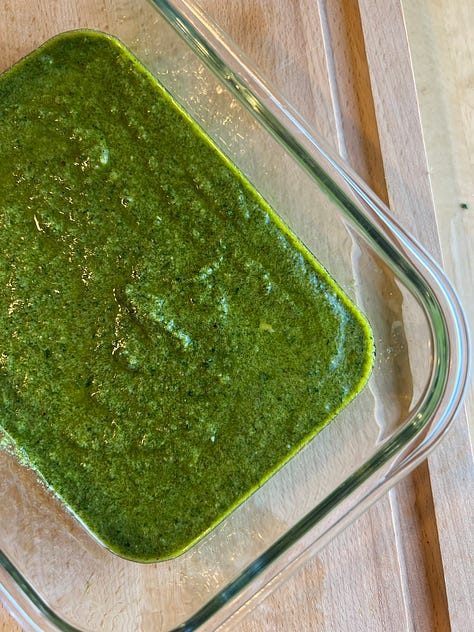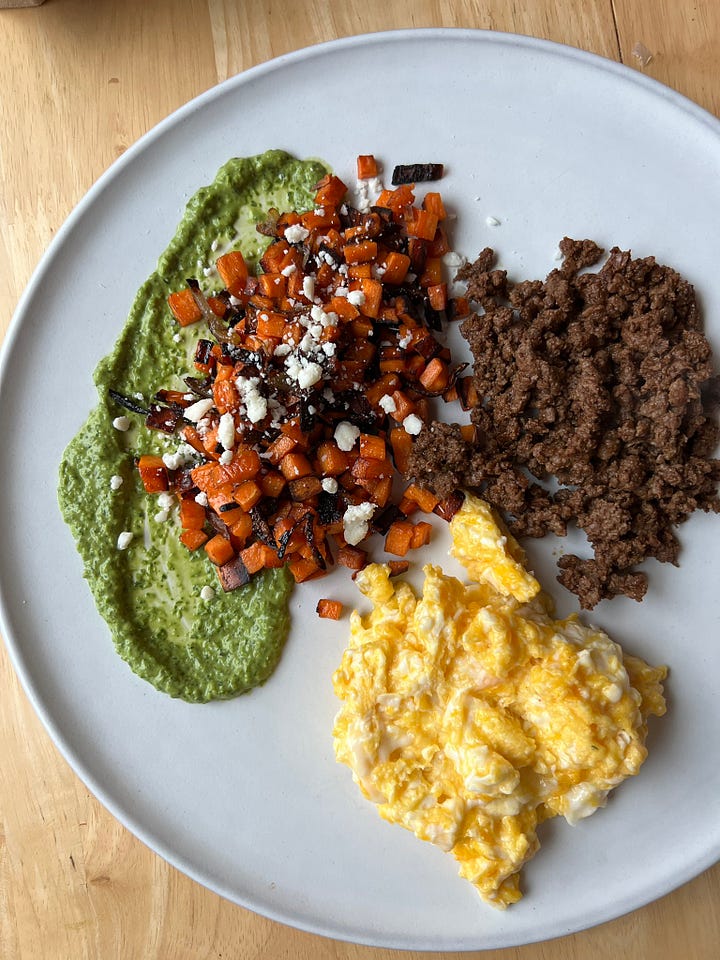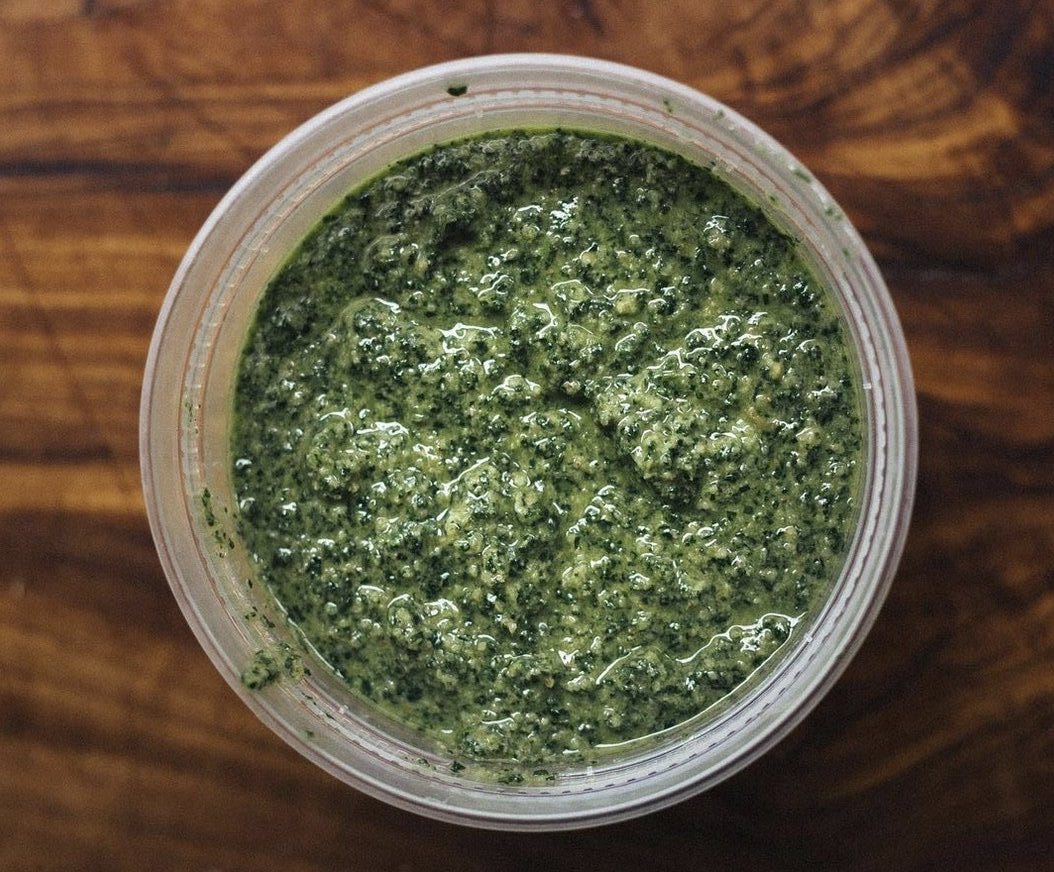Hey, everyone.
This week I want to share with you a simple way of thinking about herb sauces. Herb sauces are super versatile, packed with flavor and nutrients, and easy to make. I’ll often make some riff on this sauce every week as a staple in my fridge— it works as a condiment, a pasta sauce, and a base for roasted vegetables. You can mix it with a bit of extra oil and vinegar to form a salad dressing, or you can add it with yogurt or mayo for a nice topping.
The best part about these sauces is how customizable they are based on what you have in your fridge. I don’t think I’ve ever made the same herb sauce twice. The core components often stay the same, but the ratios and specifics always differ. And that’s the beauty of this format.
My biggest advice here is to not overthink it. This isn't a recipe, it's a general framework. There are no specific measurements here, because you really can't go wrong. There are so many different combinations of herbs, nuts, seeds, and more that will work great. I’ve included a recipe I made recently, but I highly encourage you to adapt this to your personal tastes and preferences.
Let me know what you make!
Myles
Components
Herb sauces have a few core components:
fresh herbs or greens
garlic (or something from the garlic family like scallions, ramps, or scapes)
some form of acidity
olive oil
And then they also can include a ton of options add-ins:
nuts or seeds
hard cheeses
chiles
anchovies
capers
various spices
Here’s how I like to think about each.
Fresh Herbs/Greens: There are a ton of different herbs you can use. My go-tos are cilantro, parsley, mint, basil, and oregano. But any fresh herb can work here. These sauces are a great way to use up leftover herbs before they go bad. I usually start with a cup or two of herbs.
Garlic: Raw garlic, roasted garlic, and garlic confit all work equally well here. Raw garlic will have a bit of a bite, while roasted garlic will be a bit more mellow. Start with 2-3 cloves and go from there.
Various members of the garlic family— scallions, ramps, scapes, black garlic— can all be fantastic substitutes, as well.
Acidity: Lemon juice/zest, lime juice/zest, and any form of vinegar will work. Other forms of acidity like preserved lemon paste also make a great addition. Start with a tbsp or so and adjust as needed.
Olive Oil: Olive oil forms the base of these sauces. It’s a fatty component that’s rounded out by the fresh herbs and the acidic component. Use the best olive oil you have. Add enough to get the consistency you want and the right balance with the other components.
Nuts/Seeds: Nuts and seeds add a lot of flavor and body to herb sauces. I almost always include them. I often use almonds, pecans, and pumpkin seeds, but nearly anything will work. Start with a small handful and add more for a thicker sauce.
Hard Cheeses: Cheeses add body, flavor, and umami. These should be hard, aged cheeses like parmesan, manchego, or pecorino. Marcella Hazan recommends folding in grated cheese to the final product, rather than adding it to the blender or food processor. It’s not strictly necessary, but it helps with texture.
Chiles, Anchovies, Capers, etc: These are all additional components you can add for more flavor. I’ve used them all in different ways. Experiment and see what you like best.
Process
These sauces are incredibly easy!
Add everything to a blender or food processor, along with a big pinch of salt, enough oil to allow it to blend, and a big squeeze of your acidic component. Blend it up, and adjust as needed with oil, vinegar, and salt to get the consistency and taste you want.
That’s it!



A Recent Sauce I Made
1 bunch of parsley (leaves picked off of stems)
1 bunch of cilantro (bottom of stems cut off)
1 jalepeño pepper
2 green onions (roots and tough tops removed)
2 cloves of garlic, peeled
1/4 cup pecans
1/4 cup toasted pepitas
juice of 2 lemons
a bunch of olive oil
a big pinch of salt
Add everything to a blender. Blend slowly, adding more olive oil as needed to get a thick, pesto-like consistency.
Pour it into a jar. Taste it, and then add more lemon juice and salt as needed to get the flavor you want.







🙌🏼
how long this sauce last in frigerator?